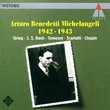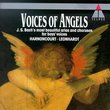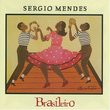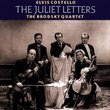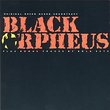| All Artists: David Shaler, Joseph Jennings, Kenneth Fitch, David Munderloh Title: Palestrina: Missa Pro Defunctis & Motets Members Wishing: 0 Total Copies: 1 Label: Teldec Release Date: 10/4/1994 Genres: Special Interest, Classical Style: Opera & Classical Vocal Number of Discs: 1 SwapaCD Credits: 1 UPCs: 745099456122, 074509945612, 074509945612, 745099456122, 074509945612, 745099456122, 074509945612, 745099456122, 074509945612, 745099456122, 074509945612, 745099456122 |
Search - David Shaler, Joseph Jennings, Kenneth Fitch :: Palestrina: Missa Pro Defunctis & Motets
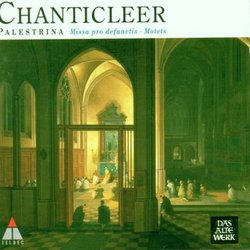 | David Shaler, Joseph Jennings, Kenneth Fitch Palestrina: Missa Pro Defunctis & Motets Genres: Special Interest, Classical No question, this choir has a sound like no other, and it's primarily due to the fact that the all-male group uses men to sing true soprano parts. Sometimes it works and sometimes it doesn't. This disc is a perfect example... more » ![header=[] body=[This CD is available to be requested as disc only.]](/images/attributes/disc.png?v=15401716) ![header=[] body=[This CD is unavailable to be requested with the disc and back insert at this time.]](/images/attributes/greyed_disc_back.png?v=15401716) ![header=[] body=[This CD is available to be requested with the disc and front insert.]](/images/attributes/disc_front.png?v=15401716) ![header=[] body=[This CD is unavailable to be requested with the disc, front and back inserts at this time.]](/images/attributes/greyed_disc_front_back.png?v=15401716) |
Larger Image |
CD DetailsSynopsis
Amazon.com No question, this choir has a sound like no other, and it's primarily due to the fact that the all-male group uses men to sing true soprano parts. Sometimes it works and sometimes it doesn't. This disc is a perfect example of what happens when everything goes right. While the opening short five-part motet Gaude gloriosa is beautiful, wait until you hear the almost unimaginable richness of the voices at the beginning of the Missa pro defunctis. It's hard to believe that this is pure, unenhanced choral singing, but it is. And it's a thrilling sound that resonates deep within. These singers perform with an expressive style that's perhaps more of the 20th century than the music will easily accept, but there's no real harm in allowing the soul that lives in the present to express itself, especially in music so sincere in its blend of the spiritual and sensual. --David Vernier Similar CDs
Similarly Requested CDs
|
CD ReviewsHeaven sent richard mullany | waynesville, north carolina United States | 09/14/2001 (5 out of 5 stars) "There is little to add, this music is an example of musics "inner life"; it would be good done by any competent group of singers. Chanticleer comes along,like Prince Charming and kisses it to life. I have had this recording for years now; it joined a collection of requiems, glorias, te deums, psalms, cantatas and other choral works that I really like. That this cd, twelve voices, should take precedence, in my mind, over some of the greatest liturgical pieces in the catalog amazes me until I realise what it is that makes such a powerful impression. It is the difference between a glass of crystal clear cold water and a tin cup of lukewarm water. It is alive. I'm an old coot; I've been collecting records for 60 years and like mosr people I'm opiniated enough to reject some things out of hand- things like a capella singing for instance. When I heard the first piece on the cd, "Gaude Glorioso" I was bamboozled. I played it several times trying to find something wrong with it. As it progressed I capitulated upon the requiem. I hesitate to bandy words like "greatest" but it's tempting to hang that banner on this music. Of a couple of thousand cd's this is the one I return to over and over. It is,to me, the very apotheosis of music in the service of spirituality. I have serious reservations about religion but this stuff speaks to me with a loud voice. I have the pleasure of having met and talked with the singers and I asked one of them whether or not he ever felt aware of just how good they were and he shook his head. Evidently the requirement is humility before the music and to rehearse until you get it right. This they do. Listen to the "Sanctus". No organ, no orchestra, only twelve voices to fill the musical heavens." Out of the Hall and into the Church David C. Grondz | Kalamazoo, MI United States | 09/22/2002 (5 out of 5 stars) "In the context of the somber austerity of the Funeral Rites of the Catholic Church, Palestrina illustrates that even sorrow can be made into a thing of beauty. He has taken the simple melodies of the chanted Requiem and encrusted them in lush tonalities, without making an overblown production and turning the whole event into a concert (q.v. Verdi "Requiem"). The Requiem is precisely not that...it is to be a comfort and a solace...something familiar and comfortable...someday it will be our turn in the box. For the student of Gregorian Chant the familiar chants can be easily discerned throughout and indeed served as the basis of this setting. In this instance Palestrina shows that he is willing to follow the decrees of the Council of Trent regarding the clarity of the text, while his selections from the Canticle of Canticles (also on this recording) is in the more florid (and less wod-based) style. This recording illustrates how such a knowledge of Chant is vital to the correct interpretation of this genre of music...without an understanding of the ancient sources the performance can become muddled and operatic.Unlike Verdi, Palestrina is a believer and this colors his music. He has understood that music is one of the tools which can elevate the mind towards God...music is the means, not the end.
Oddly enough, the true gem in this recording is not the Requiem. Palestrina's setting of the "Pange Lingua" shows how polyphony can be used with chant. The verses alternate between chant and polyphony, but even the polyphony is based upon the chant...just listen to the First verse "Pange" in ployphony and then the second "Nobis" and listen closely...you will notice what I mean. The first time that I heard this version (and being both a student of music and now a student of theology, I have heard many ... renditions of this poetic hymn) I was overcome and had to listen to it again, precisely because the use of chant is incorporated so perfectly by the composer. It was one of those moments where you know stop and say "wow". The goal in our day is to use these settings for their intended purpose...to remove them from the concert hall and to reinstate them in church. Hats off to Chanticleer for another well-executed disc." |


